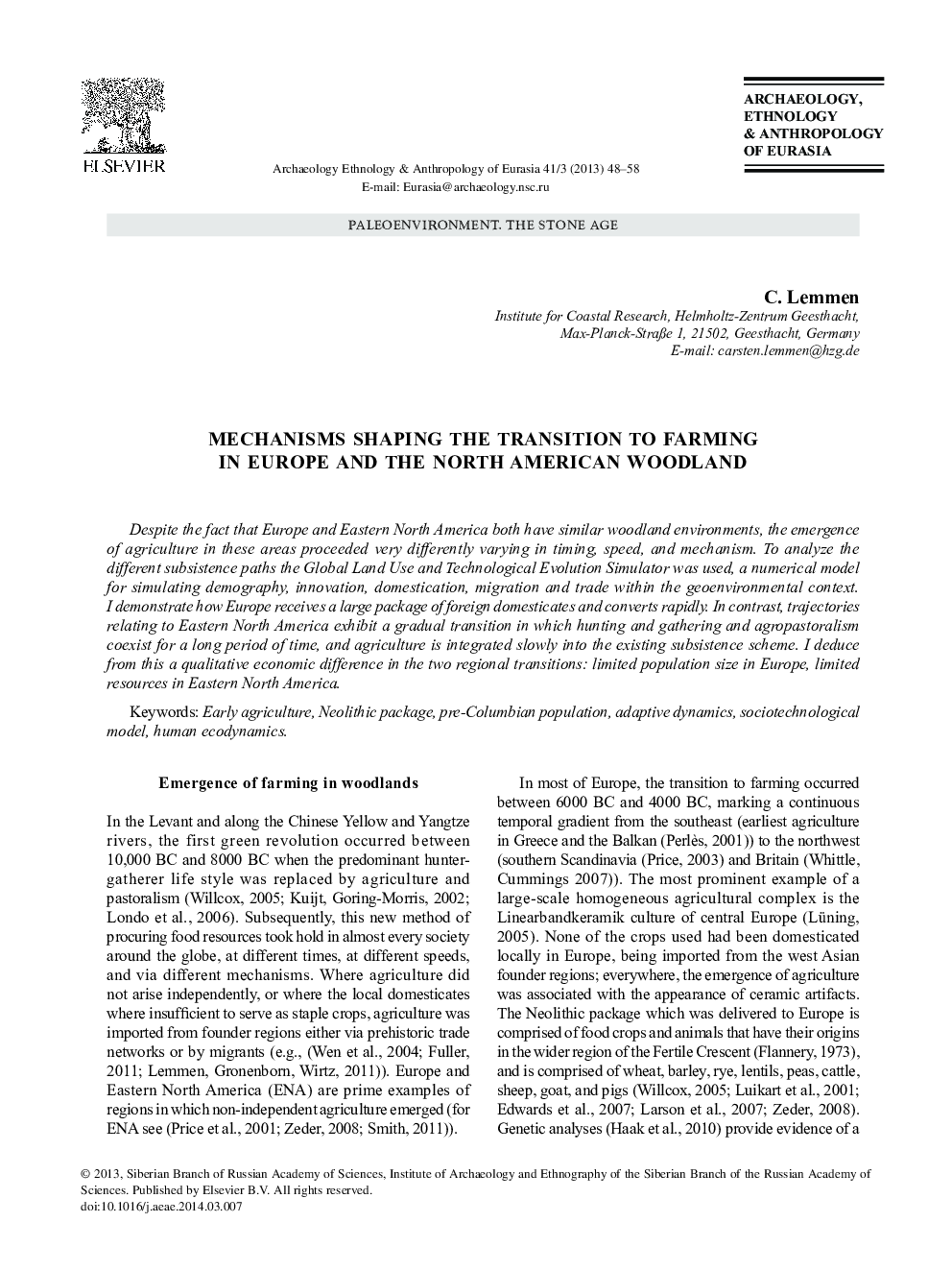| Article ID | Journal | Published Year | Pages | File Type |
|---|---|---|---|---|
| 1034283 | Archaeology, Ethnology and Anthropology of Eurasia | 2013 | 11 Pages |
Despite the fact that Europe and Eastern North America both have similar woodland environments, the emergence of agriculture in these areas proceeded very differently varying in timing, speed, and mechanism. To analyze the different subsistence paths the Global Land Use and Technological Evolution Simulator was used, a numerical model for simulating demography, innovation, domestication, migration and trade within the geoenvironmental context. I demonstrate how Europe receives a large package of foreign domesticates and converts rapidly. In contrast, trajectories relating to Eastern North America exhibit a gradual transition in which hunting and gathering and agropastoralism coexist for a long period of time, and agriculture is integrated slowly into the existing subsistence scheme. I deduce from this a qualitative economic difference in the two regional transitions: limited population size in Europe, limited resources in Eastern North America.
